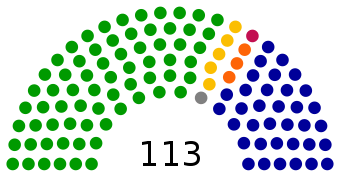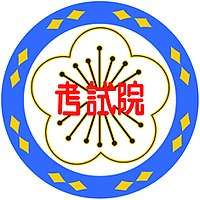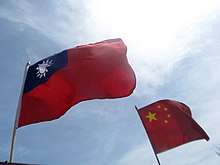Taiwan independence movement
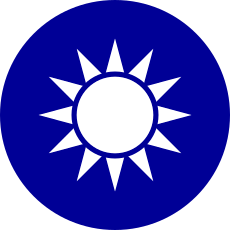 |
|---|
| This article is part of a series on the politics and government of the Republic of China |
|
Leadership |

|
|
Other branches |
|
Related topics |
|
|
| Taiwan independence movement | |||||||||||||||||||||||||||
| Traditional Chinese | 臺灣獨立運動 or 台灣獨立運動 | ||||||||||||||||||||||||||
|---|---|---|---|---|---|---|---|---|---|---|---|---|---|---|---|---|---|---|---|---|---|---|---|---|---|---|---|
| Simplified Chinese | 台湾独立运动 | ||||||||||||||||||||||||||
| |||||||||||||||||||||||||||
| commonly abbreviated as | |||||||||||||||||||||||||||
| Traditional Chinese | 臺獨 or 台獨 | ||||||||||||||||||||||||||
| Simplified Chinese | 台独 | ||||||||||||||||||||||||||
| |||||||||||||||||||||||||||
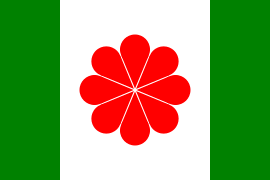
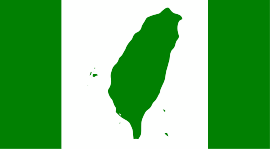

The Taiwan independence movement is a political movement to pursue formal independence of Taiwan.
Goals for independence have arisen from international law in relation to the 1952 Treaty of San Francisco.[1][2][3][4] Supporters contend that when Japan renounced all rights to the island of Taiwan and Penghu in 1952, it did not specify the successor state. Consequently, the sovereignty of the two territories should be determined by Taiwanese people through self-determination and referendums in Taiwan.
Taiwan independence is supported by the Pan-Green Coalition in Taiwan, but opposed by the Pan-Blue Coalition which seeks to retain the somewhat ambiguous status quo of the Republic of China (ROC) under the 1992 consensus, or gradually reunify with mainland China at some point.[5]
The use of independence for Taiwan can be ambiguous. If some supporters articulate that they agree to the independence of Taiwan, they may either be referring to the notion of formally creating an independent Republic of Taiwan, or to the notion that Taiwan has become synonymous with the current Republic of China from Resolution on Taiwan's Future and ROC-Taiwan is already independent (as reflected in the evolving concept from Four Noes and One Without to One Country on Each Side), these ideas run counter to the claims of the People's Republic of China. Some supporters advocate the exclusion of Kinmen and Matsu, which are still being controlled by Republic of China but are in fact part of the definition of mainland China.[6] Therefore, the differences between the opinions of different camps in support of and against independence can be very subtle.
From 1683 to 1894, Taiwan was ruled by the Qing Empire of China. Following the First Sino-Japanese War in 1895, Taiwan was ceded by Qing government to the Empire of Japan via the Treaty of Shimonoseki. At the end of World War II in 1945, Taiwan was taken over by the ROC, which was widely recognized as China. Since the defeat and expulsion of the ruling Kuomintang ROC government by the Communist Party of China from mainland China in 1949, the ROC government has controlled only Taiwan and its surrounding islands. It is a point of contention as to whether Taiwan has already achieved de facto independence under the Constitution of the Republic of China amended in 2005.
History of the movement
Many supporters of independence for Taiwan view the history of Taiwan since the 17th century as a continuous struggle for independence and use it as an inspiration for the current political movement.[7]
According to this view, the people indigenous to Taiwan and those who have taken up residence there have been repeatedly occupied by groups including the Dutch, the Spanish, the Ming, Koxinga and the Ming loyalists, the Qing, the Japanese and finally the Chinese Nationalists led by the Kuomintang. From a pro-independence supporter's point of view, the movement for Taiwan independence began under Qing rule in the 1680s which led to a well known saying those days, "Every three years an uprising, every five years a rebellion". Taiwan Independence supporters compared Taiwan under Kuomintang rule to South Africa under apartheid.[8] The Taiwan independence movement under Japan was supported by Mao Zedong in the 1930s as a means of freeing Taiwan from Japanese rule.[9]
With the end of World War II in 1945, by issuing "General Order No. 1" to the Supreme Commander for the Allied Powers, the Allies agreed that the Republic of China Army under the Kuomintang would "temporarily occupy Taiwan, on behalf of the Allied forces."[10]
Martial law period

.jpg)
Modern-day political movement for Taiwan independence dates back to the Japanese colonial period but only became a viable political force within Taiwan in the 1990s. Taiwanese independence was advocated periodically during the Japanese colonial period, but was suppressed by the Japanese government. These efforts were the goal of the Taiwanese Communist Party of the late 1920s. Unlike current formulations, and in line with the thinking of the Comintern, such a state would have been a proletarian one. With the end of World War II in 1945, Japanese rule ended, but the subsequent autocratic rule of the ROC's Kuomintang (KMT) later revived calls for local rule. However, it was a movement supported by the Chinese students who were born on the Island and not associated with KMT. It found its roots in the US and Japan. In the 1950s a Republic of Taiwan Provisional Government was set up in Japan. Thomas Liao was nominally the President. At one time it held quasi-official relations with the newly independent Indonesia. This was possible mainly through the connections between Sukarno and the Provisional Government's Southeast Asian liaison, Chen Chih-hsiung, who had assisted in Indonesia's local resistance movements against the Japanese rule.
After the Kuomintang began to rule the island, the focus of the movement was as a vehicle for discontent from the native Taiwanese against the rule of "mainlanders" (i.e. mainland Chinese-born people who fled to Taiwan with KMT in the late 1940s). The February 28 Incident in 1947 and the ensuing martial law which lasted until 1987 contributed to a so-called sense of White Terror on the island. In 1979, the Kaohsiung Incident, occurred as the movement for democracy and independence intensified.
Between 1949 and 1991, the official position[11] of the ROC government on Taiwan was that it was the legitimate government of all of China and it used this position as justification for authoritarian measures such as the refusal to vacate the seats held by delegates elected on the mainland in 1947 for the Legislative Yuan. The Taiwan independence movement intensified in response to this and presented an alternative vision of a sovereign and independent Republic of Taiwan. This vision was represented through a number of symbols such as the use of Taiwanese in opposition to the school-taught Mandarin Chinese.
Several scholars drafted various versions of a constitution, as both political statement or vision and as intellectual exercise. Most of these drafts favor a bicameral parliamentary rather than presidential system. In at least one such draft, seats in the upper house would be divided equally among Taiwan's established ethnicities. In the 1980s the Chinese Nationalist government considered publication of these ideas criminal. In the most dramatic case, it decided to arrest the pro-independence publisher Cheng Nan-jung for publishing a version in his Tang-wai magazine, Liberty Era Weekly (自由時代週刊). Rather than giving himself up, Cheng self-immolated in protest. Other campaigns and tactics toward such a State have included soliciting designs from the public for a new national flag (see images to the right) and anthem (for example, Taiwan the Formosa). More recently the Taiwan Name Rectification Campaign (台灣正名運動) has played an active role. More traditional independence supporters, however, have criticized name rectification as merely a superficial tactic devoid of the larger vision inherent in the Republic of Taiwan agenda.
Various overseas Taiwan Independence movements, such as the Formosan Association, World United Formosans for Independence, United Young Formosans for Independence (Japan), Union for Formosa's Independence in Europe, United Formosans in America for Independence, Committee for Human Rights in Formosa (Toronto, Ont.), published "The Independent Formosa" in several volumes with the publisher "Formosan Association." In "The Independent Formosa, Volumes 2-3", they tried to justify Taiwanese collaboration with Japan during World War II by saying that the "atmosphere covered the whole Japanese territories, including Korea and Formosa, and the Japanese mainlands as well", when Taiwanese publications supported Japan's "holy war", and that the people who did it were not at fault.[12]
The Anti-communist Kuomintang leader Chiang Kai-shek, President of the Republic of China on Taiwan, believed the Americans were going to plot a coup against him along with Taiwan Independence. In 1950, Chiang Ching-kuo became director of the secret police, which he remained until 1965. Chiang also considered some people who were friends to Americans to be his enemies. An enemy of the Chiang family, Wu Kuo-chen, was kicked out of his position of governor of Taiwan by Chiang Ching-kuo and fled to America in 1953.[13] Chiang Ching-kuo, educated in the Soviet Union, initiated Soviet style military organization in the Republic of China Military, reorganizing and Sovietizing the political officer corps, surveillance, and Kuomintang party activities were propagated throughout the military. Opposed to this was Sun Li-jen, who was educated at the American Virginia Military Institute.[14] Chiang orchestrated the controversial court-martial and arrest of General Sun Li-jen in August 1955, for plotting a coup d'état with the American CIA against his father Chiang Kai-shek and the Kuomintang. The CIA allegedly wanted to help Sun take control of Taiwan and declare its independence.[13][15]
During the martial law era lasting until 1987, discussion of Taiwan independence was forbidden in Taiwan, at a time when recovery of the mainland and national unification were the stated goals of the ROC. During that time, many advocates of independence and other dissidents fled overseas, and carried out their advocacy work there, notably in Japan and the United States. Part of their work involved setting up think tanks, political organizations, and lobbying networks in order to influence the politics of their host countries, notably the United States, the ROC's main ally at the time, though they would not be very successful until much later. Within Taiwan, the independence movement was one of many dissident causes among the intensifying democracy movement of the 1970s, which culminated in the 1979 Kaohsiung Incident. The Democratic Progressive Party (DPP) was eventually formed to represent dissident causes.
Multiparty period
After the lifting of martial law in 1987, and the acceptance of multi-party politics, the Democratic Progressive Party became increasingly identified with Taiwan independence, which entered its party platform in 1991. At the same time, many overseas independence advocates and organizations returned to Taiwan and for the first time openly promoted their cause in Taiwan, gradually building up political support. Many had previously fled to the US or Europe and had been on a blacklist held by KMT, which had held them back from going back to Taiwan. Where they had fled, they built many organisations like European Federation of Taiwanese Associations or Formosan Association for Public Affairs. By the late 1990s, DPP and Taiwan independence have gained a solid electoral constituency in Taiwan, supported by an increasingly vocal and hardcore base.
As the electoral success of the DPP, and later, the DPP-led Pan-Green Coalition grew in recent years, the Taiwan independence movement shifted focus to identity politics by proposing many plans involving symbolism and social engineering. The interpretation of historical events such as the February 28 Incident, the use of broadcast language and mother tongue education in schools, the official name and flag of the ROC, slogans in the army, orientation of maps all have been issues of concern to the present-day Taiwan independence movement. The movement, at its peak in the 70s through the 90s in the form of the Taiwan literature movement and other cultural upheavals, has moderated in recent years with the assimilation of these changes. Friction between "mainlander" and "native" communities on Taiwan has decreased due to shared interests: increasing economic ties with mainland China, continuing threats by the PRC to invade, and doubts as to whether or not the United States would support a unilateral declaration of independence. Since the late 1990s many supporters of Taiwan independence have argued that Taiwan, as the ROC, is already independent from the mainland, making a formal declaration unnecessary. In May 1999, the Democratic Progressive Party formalized this position in its "Resolution on Taiwan's Future".
In 1995, Taiwanese president Lee Teng-hui was given permission to speak at Cornell University about his dream of Taiwanese independence, the first time a Taiwanese leader had been allowed to visit the United States. This led to a military response from China that included buying Russian submarines and conducting missile tests near Taiwan.[16]
Chen Shui-bian administration (2000–2008)
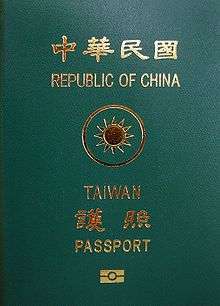
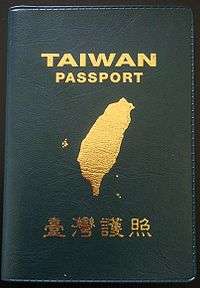
In February 2007, President Chen Shui-bian initiated changes to names of state-owned enterprises, and the nation's embassies and overseas representative offices. As a result, Chunghwa Post Co. (中華郵政) was renamed Taiwan Post Co (臺灣郵政) and Chinese Petroleum Corporation (中國石油) is now called CPC Corporation, Taiwan (臺灣中油) and the signs in Taiwan's embassies now display the word "Taiwan" in brackets after "Republic of China".[17] In 2007, the Taiwan Post Co. issued stamps bearing the name "Taiwan" in remembrance of the February 28 Incident. However, the name of the post office was reverted to 'Chunghwa Post Co.' following the inauguration of Kuomintang president Ma Ying-jeou in 2008.
The Pan-Blue camp voiced its opposition to the changes and the former KMT Chairman Ma Ying-jeou said that it would generate diplomatic troubles and cause cross-strait tensions. It also argued that without a change in the relevant legislation pertaining to state-owned enterprises, the name changes of these enterprises could not be valid. As the Pan-Blue camp held a slim parliamentary majority throughout the administration of President Chen, the Government's motion to change the law to this effect were blocked by the opposition. Later, U.S. Department of State spokesman Sean McCormack said that the U.S. does not support administrative steps that would appear to change Taiwan's status or move toward independence.
Former president Lee Teng-hui has stated that he never pursued Taiwanese independence. Lee views Taiwan as already an independent state, and that the call for "Taiwanese independence" could even confuse the international community by implying that Taiwan once viewed itself as part of China. From this perspective, Taiwan is independent even if it remains unable to enter the UN. Lee said the most important goals are to improve the people's livelihoods, build national consciousness, make a formal name change and draft a new constitution that reflects the present reality so that Taiwan can officially identify itself as a country.[18]
Ma Ying-jeou administration (2008–2016)
Legislative elections were held on 12 January 2008, resulting in a supermajority (86 of the 113 seats) in the legislature for the Kuomintang (KMT) and the Pan-Blue Coalition. President Chen Shui-bian's Democratic Progressive Party was handed a heavy defeat, winning only the remaining 27 seats. The junior partner in the Pan-Green Coalition, the Taiwan Solidarity Union, won no seats.
Two months later, the election for the 12th-term President and Vice-President of the Republic of China was held on Saturday, 22 March 2008.[19] Kuomintang (KMT) nominee Ma Ying-jeou won, with 58% of the vote, ending eight years of Democratic Progressive Party rule. Along with the 2008 legislative election, Ma's landslide victory brought the Kuomintang back to power in Taiwan.[20]
On 1 August 2008, the Board of Directors of Taiwan Post Co. resolved to reverse the name change and restored the name "Chunghwa Post".[21] The Board of Directors, as well as resolving to restore the name of the corporation, also resolved to re-hire the chief executive dismissed in 2007, and to withdraw defamation proceedings against him.[22]
On September 2, 2008, President Ma defined the relations between Taiwan and mainland China as "special", but "not that between two states" - they are relations based on two areas of one state, with Taiwan considering that state to be the Republic of China, and mainland China considering that state to be the People's Republic of China.[23][24]
Ma's approach with the mainland is conspicuously evasive of political negotiations that may lead to unification which is the mainland's ultimate goal. The National Unification Guidelines remain “frozen” and Ma has precluded any discussion of reunification during his term by his “three no’s” (no unification, no independence, and no use of force).[25]
Tsai Ing-wen administration (2016–present)
The Democratic Progressive Party, led by Tsai Ing-wen, won a landslide victory over the Kuomintang on 20 May 2016.[26][27] Her administration has stated she seeks to maintain the current political status of Taiwan.[28][29] The PRC government continues to criticize the Taiwanese government, as the DPP administration has refused to officially recognize the 1992 Consensus and the One-China policy.[30][31]
Significance
Domestically, the issue of independence has dominated Taiwanese politics for the past few decades. This is also a grave issue for mainland China. The creation of the Republic of Taiwan is formally the goal of the Taiwan Solidarity Union and former President Lee Teng-hui. Although the Democratic Progressive Party was originally also an advocate for both the idea of the Republic of Taiwan and Taiwan independence, they take a middle line in which a sovereign, independent Taiwan is identified with the "Republic of China (Taiwan)" and its symbols.
This movement also has international significance, because the PRC has stated, or implied, that it will force reunification by taking military action against Taiwan under one of these five conditions: (1) Taiwan makes a formal declaration of independence, (2) Taiwan forges a military alliance with a foreign power, (3) internal turmoil arises in Taiwan, (4) Taiwan gains weapons of mass destruction, (5) Taiwan shows no will to negotiate on the basis of “one China.” The PRC government warned that if the situation in Taiwan were to become “worse,” it will not look on “indifferently.” Such a military action would pose the threat of a superpower conflict in East Asia, as the United States would be obligated to come to Taiwan's aid according to US domestic law, under the terms of its Taiwan Relations Act. However, such interpretation of the act is disputed, because constitutional law requires that a normal declaration of war be sought by the President of the United States in an act of Congress signed by the President.
Responses
The questions of independence and the island's relationship to mainland China are complex and inspire very strong emotions among Taiwanese people. There are some who continue to maintain the KMT's position, which states that the ROC is the sole legitimate government for all of China (including Taiwan), and that the aim of the government should be eventual reunification of the mainland and Taiwan under the rule of the ROC. Some argue that Taiwan has been, and should continue to be, completely independent from China and should become a sovereign nation under the name Republic of Taiwan. Then, there are numerous positions running the entire spectrum between these two extremes.
On 25 October 2004, in Beijing, the U.S. Secretary of State Colin Powell said Taiwan is “not sovereign,” provoking strong comments from both the Pan-Green and Pan-Blue coalitions – but for very different reasons. From the DPP's side, President Chen declared that “Taiwan is definitely a sovereign, independent country, a great country that absolutely does not belong to the People's Republic of China". The TSU (Taiwan Solidarity Union) criticized Powell, and questioned why the US sold weapons to Taiwan if it were not a sovereign state. From the KMT, then Chairman Ma Ying-jeou announced, “the Republic of China has been a sovereign state ever since it was formed [in 1912].” The pro-unification PFP Party Chairman, James Soong, called it “Taiwan's biggest failure in diplomacy.[32]”
Support for independence

The first view considers the move for Taiwan independence as a nationalist movement. Historically, this was view of such pro-independence groups as the tang wai movement (which later grew into the Democratic Progressive Party) who argued that the ROC under the Kuomintang had been a "foreign regime" forcibly imposed on Taiwan. Since the 1990s, supporters of Taiwan independence no longer actively make this argument. Instead, the argument has been that, in order to survive the growing power of the PRC, Taiwan must view itself as a separate and distinct entity from “China.” Such a change in view involves: (1) removing the name of “China” from official and unofficial items in Taiwan, (2) changes in history books, which now portrays Taiwan as a central entity, (3) promoting the use of Taiwanese language in the government and in the education system, (4) reducing economic links with mainland China, and (5) promoting the general thinking that Taiwan is a separate entity. The goal of this movement is the eventual creation of a country where China is a foreign entity, and Taiwan is an internationally recognized country separate from any concept of “China.” The proposed “state of Taiwan” will exclude areas such as Kinmen and Matsu off the coast of Fujian, and some of the islands in the South China Sea, which historically were not part of Taiwan. Some supporters of Taiwan independence argue that the Treaty of San Francisco[33] justifies Taiwan independence by not explicitly granting Taiwan to either the ROC or the PRC, even though neither the PRC nor the ROC government accepts such legal justification. It is also thought that if formal independence were declared, Taiwan's foreign policies would lean further towards Japan and the United States, and the desirable option of United Nations Trusteeship Council is also considered. The independence of Taiwan, along with independence of Tibet, is also supported by many Japanese and Filipinos, both maritime neighbors of Taiwan.
In 2018, political parties and organizations demanding a referendum on Taiwan's independence formed an alliance to further their objective. The Formosa Alliance was established on a Saturday, prompted by a sense of crisis in the face of growing pressure from China for unification.
The alliance wants to hold a referendum on Taiwan's independence in April 2019, and change the island's name from the “Republic of China” to “Taiwan,” and apply for membership in the United Nations.[34]
Support for status quo
A second view is that Taiwan is already an independent nation with the official name “Republic Of China,” which has been independent (i.e. de facto separate from mainland China) since the end of the Chinese Civil War in 1949, when the ROC lost control of mainland China, with only Taiwan (including the Penghu islands), Kinmen, the Matsu Islands off the coast of Fujian Province, and some of the islands in the South China Sea remaining under its administration. Although previously no major political faction adopted this pro-status quo viewpoint, because it is a "compromise" in face of PRC threats and American warnings against a unilateral declaration of independence, the DPP combined it with their traditional belief to form their latest official policy. This viewpoint has not been adopted by more radical groups such as the Taiwan Solidarity Union, which favor only the third view described above and are in favor of a Republic or State of Taiwan. In addition, many members of the Pan-Blue Coalition are rather suspicious of this view, fearing that adopting this definition of Taiwan independence is merely an insincere stealth tactical effort to advance desinicization and the third view of Taiwan independence. As a result, supporters of Pan-Blue tend to make a clear distinction between Taiwan independence and Taiwan sovereignty, while supporters of Pan-Green tend to try to blur the distinction between the two.
Most Taiwanese and political parties of the ROC support the status quo, and recognize that this is de facto independence through sovereign self-rule. Even among those who believe Taiwan is and should remain independent, the threat of war from PRC softens their approach, and they tend to support maintaining the status quo rather than pursuing an ideological path that could result in war with the PRC. When President Lee Teng-hui put forth the two-states policy, he received 80% support. A similar situation arose when President Chen Shui-bian declared that there was "one country on each side" of the Taiwan Strait. To this day, the parties disagree, sometimes bitterly, on such things as territory, name (R.O.C. or Taiwan), future policies, and interpretations of history. The Pan-Blue Coalition and the PRC believe that Lee Teng-hui and Chen Shui-bian are intent on publicly promoting a moderate form of Taiwan independence in order to advance secretly deeper forms of Taiwan independence, and that they intend to use popular support on Taiwan for political separation to advance notions of cultural and economic separation.
Opposition to independence
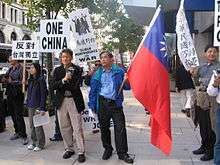
The third view, put forward by the government of the PRC and Nationalists of the KMT, defines Taiwan independence as “splitting Taiwan from China, causing division of the nation and the people.” What PRC claims by this statement is somewhat ambiguous according to supporters of Taiwanese independence, as some statements by the PRC seem to identify China solely and uncompromisingly with the PRC. Others propose a broader and more flexible definition suggesting that both mainland China and Taiwan are parts that form one cultural and geographic entity, although divided politically as a vestige of the Chinese Civil War. The PRC considers itself the sole legitimate government of all China, and the ROC to be a defunct entity replaced in the Communist revolution which succeeded in 1949. Therefore, assertions that the ROC is a sovereign state are construed as support for Taiwan independence, so are proposals to change the name of the “ROC” to “Republic of Taiwan.” Such a name change is met with even more disapproval since it rejects Taiwan as part of the greater China entity (as one side of an unresolved Chinese civil war). The ROC used to be recognized by the UN as the sole legal government of China until 1971. In that year, the UN Resolution 2758 was passed, and the PRC became recognized as the legal government of China by the UN. During PRC President Hu Jintao’s visit to the United States on 20 April 2006, U.S. President George W. Bush reaffirmed to the world that the U.S. would uphold its “one China” policy.[35]
Notable advocates
- Chen Shui-bian, President of the Republic of China (Taiwan 2000–2008)
See also
- History of Taiwan
- Formosa Alliance
- Democratic Progressive Party
- Taiwan Solidarity Union
- Taiwanization
- Taiwanese literature movement
- Taiwanese people
- Taiwanese nationalism
- Tangwai movement
- History of Taiwan under Japanese rule
- History of the Republic of China
- Chinese Civil War
- Four-stage Theory of the Republic of China
- Foreign relations of Taiwan
- Taiwan in United Nations
- Taiwan Relations Act
- Three Communiqués
- Taiwan Name Rectification Campaign
- Taiwan consensus
- 51st state (Be the 51st state of the United States)
References
- ↑ Tkacik, John. "Taiwan's "Unsettled" International Status: Preserving U.S. Options in the Pacific". The Heritage Foundation.
- ↑ http://ir.lawnet.fordham.edu/cgi/viewcontent.cgi?article=1950&context=ilj
- ↑ http://www.fpri.org/docs/media/201107.delisle.taiwan.pdf
- ↑ http://digital.law.washington.edu/dspace-law/bitstream/handle/1773.1/748/11PacRimLPolyJ063.pdf
- ↑ U.S.-Taiwan Defense Relations in the Bush Administration Archived 2006-03-16 at the Wayback Machine., The Heritage Foundation (noting the policy of President George W. Bush toward Taiwan's defense).
- ↑ Department of External Affairs (1955). Current Notes on International Affairs. 26. Canberra: Department of External Affairs. p. 57.
In this area of tension and danger a distinction, I think, can validly be made between the position of Formosa and Pescadores, and the islands off the China coast now in Nationalist hands; the latter are indisputably part of the territory of China; the former, Formosa and the Pescadores, which were Japanese colonies for fifty years prior to 1945 and had had a checkered history before that are not.
- ↑ Li, Thian-hok (April 15, 1956). "Our Historical Struggle for Liberty". Free Formosans' Formosa Newsletter. Free Formosans' Formosa. Archived from the original on September 28, 2007.
- ↑ "台灣海外網". www.taiwanus.net.
- ↑ Hsiao, Frank; Sullivan, Lawrence (1979). "The Chinese Communist Party and the Status of Taiwan, 1928-1943". Pacific Affairs. Pacific Affairs, Vol. 52, No. 3. 52 (3): 446–467. doi:10.2307/2757657. JSTOR 2757657.
- ↑ "Methods of Acquiring Sovereignty: PRESCRIPTION". Related Topics: Sovereignty. Taiwan Documents Project.
- ↑ Li, Thian-hok (1958). "The China Impasse, a Formosan view" (PDF). Foreign Affairs. 36 (3): 437–448. doi:10.2307/20029298.
- ↑ Formosan Association, World United Formosans for Independence, United Young Formosans for Independence (Japan), Union for Formosa's Independence in Europe, United Formosans in America for Independence, Committee for Human Rights in Formosa (Toronto, Ont.) (1963). The Independent Formosa, Volumes 2-3. Formosan Association. p. 14. Retrieved Dec 20, 2011.
newspapers with the help of Roman letters within one month's learning." To be sure, Roman letters are a very effective means to transcribe Formsan. On this point Mr. Ozaki seems to mean that it is against the "Racial style", which is misleading...atmosphere covered the whole Japanese territories, including Korea and Formosa, and the Japanese mainlands as well. So quite naturally works to applaud the "holy war" were not infrequently produced. But who could blame them and who had a right to throw a stone at
Original from the University of Michigan - 1 2 Peter R. Moody (1977). Opposition and dissent in contemporary China. Hoover Press. p. 302. ISBN 0-8179-6771-0. Retrieved 2010-11-30.
- ↑ Jay Taylor (2000). The Generalissimo's son: Chiang Ching-kuo and the revolutions in China and Taiwan. Harvard University Press. p. 195. ISBN 0-674-00287-3. Retrieved 2010-06-28.
- ↑ Nançy Bernkopf Tucker (1983). Patterns in the dust: Chinese-American relations and the recognition controversy, 1949-1950. Columbia University Press. p. 181. ISBN 0-231-05362-2. Retrieved 2010-06-28.
- ↑ Ross, Robert S. (March–April 2006). "Taiwan's Fading Independence Movement" (PDF). Foreign Affairs. Retrieved 2015-03-25.
- ↑ Jewel Huang (12 February 2007). "Analysis: Name changes reflect increasing 'Taiwan identity'". Taipei Times. p. 3.
- ↑ "Pan-green bickering takes focus off issues". Taipei Times. 10 March 2007. p. 8.
- ↑ http://udn.com/NEWS/NATIONAL/NAT1/3918552.shtml
- ↑ http://www.globalsecurity.org/wmd/library/news/taiwan/2008/taiwan-080322-cna02.htm Decisive election win puts KMT back in power
- ↑ 中華郵政股份有限公司 (25 December 2007). "中華郵政全球資訊網". www.post.gov.tw.
- ↑ 台灣郵政改回中華郵政 (Taiwan Post changes back to Chunghwa Post)
- ↑ "Taiwan and China in 'special relations': Ma". China Post. 2008-09-04.
- ↑ "Ma refers to China as ROC territory in magazine interview". Taipei Times. 2008-10-08.
- ↑ Yu-Shan Wu. "Heading towards Troubled Waters? The Impact of Taiwan's 2016 Elections on Cross-Strait Relations" (PDF). p. 80.
- ↑ Chung, Lawrence Gan; Chan, Minnie; Liu, Zhen; Gan, Nectar (17 January 2016). "Taiwan's first female president Tsai Ing-wen warns China after landslide victory". South China Morning Post. Retrieved 16 December 2016.
- ↑ Page, Jeremy; Hsu, Jenny W.; Dou, Eva (16 January 2016). "Taiwan Elects Tsai Ing-wen as First Female President". Wall Street Journal. Retrieved 16 December 2016.
- ↑ "Taiwanese President Tsai: Taiwan Won't Succumb to China's Pressure". Wall Street Journal. 5 October 2016. Retrieved 16 December 2016.
- ↑ Loa, Iok-sin (27 February 2016). "DPP says new government will maintain 'status quo'". Taipei Times. Retrieved 16 December 2016.
- ↑ Chen, Dingding (25 May 2016). "Without Clarity on 1992 Consensus, Tsai and DPP Will Face Challenges Ahead". The Diplomat. Retrieved 16 December 2016.
- ↑ "Beijing threatens to end communication with Taiwan if it pursues independence". San Diego Union Tribune. 21 May 2016. Retrieved 16 December 2016.
- ↑ "The appropriate interpretation of Powell's statement" (in Chinese). People First Official Website. Retrieved 2008-05-10.
- ↑ "Treaty of San Francisco". text of the treaty. 1951. Archived from the original on 2007-09-04. Retrieved 2007-03-10.
- ↑ https://asia.nikkei.com/Politics/Pro-independence-forces-in-Taiwan-align-to-push-referendum
- ↑ Chang, Yun-ping (22 April 2006). "Taiwan welcomes Bush remarks". Taipei Times. p. 1.
Further reading
- Bush, R. & O'Hanlon, M. (2007). A War Like No Other: The Truth About China's Challenge to America. Wiley. ISBN 0-471-98677-1
- Bush, R. (2006). Untying the Knot: Making Peace in the Taiwan Strait. Brookings Institution Press. ISBN 0-8157-1290-1
- Carpenter, T. (2006). America's Coming War with China: A Collision Course over Taiwan. Palgrave Macmillan. ISBN 1-4039-6841-1
- Cole, B. (2006). Taiwan's Security: History and Prospects. Routledge. ISBN 0-415-36581-3
- Copper, J. (2006). Playing with Fire: The Looming War with China over Taiwan. Praeger Security International General Interest. ISBN 0-275-98888-0
- Federation of American Scientists et al. (2006). Chinese Nuclear Forces and U.S. Nuclear War Planning
- Gill, B. (2007). Rising Star: China's New Security Diplomacy. Brookings Institution Press. ISBN 0-8157-3146-9
- Manthorpe, Jonathan (2008). Forbidden Nation: a History of Taiwan. Palgrave MacMillan. ISBN 1-4039-6981-7
- Shirk, S. (2007). China: Fragile Superpower: How China's Internal Politics Could Derail Its Peaceful Rise. Oxford University Press. ISBN 0-19-530609-0
- Tsang, S. (2006). If China Attacks Taiwan: Military Strategy, Politics and Economics. Routledge. ISBN 0-415-40785-0
- Tucker, N.B. (2005). Dangerous Strait: the U.S.-Taiwan-China Crisis. Columbia University Press. ISBN 0-231-13564-5
External links
- Taiwan history
- Yes to Taiwan
- The True History of Taiwan
- San Francisco Treaty vs Cairo Declaration
- Taiwan population and languages
- Taiwan time line
- Taiwan history in comics
- World United Formosans for Independence
- Taiwan poll should ask about US sovereignty
- America and Taiwan, 1943-2004
- Taiwan Documents Project
- Formosan Association for Public Affairs
